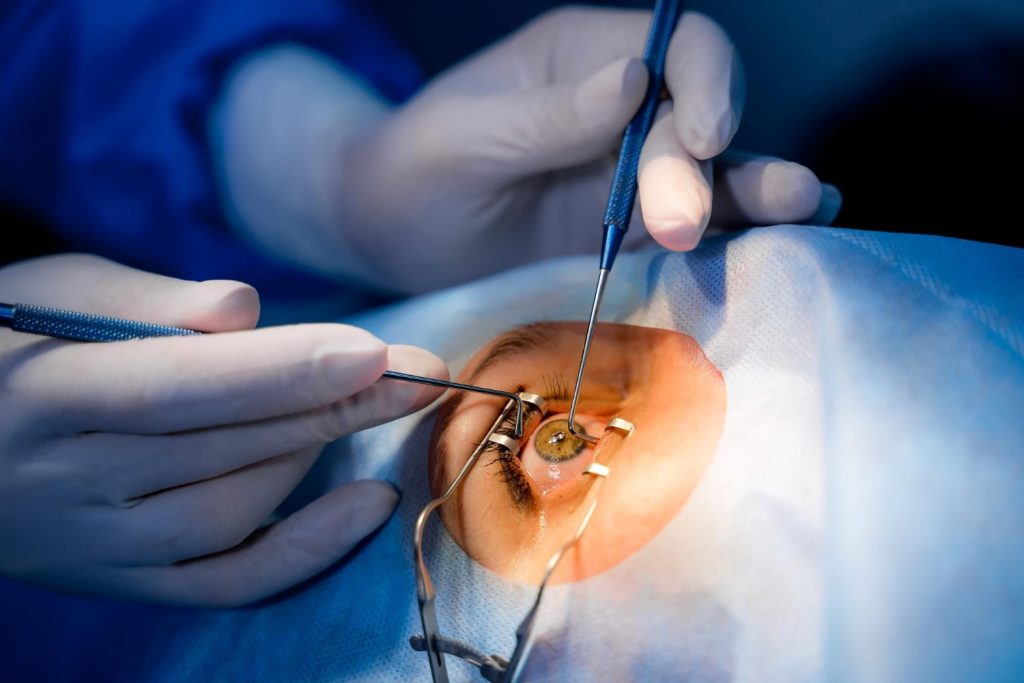
טיפות דמעות – מה זה ולמה משתמשים בהן?
טיפות דמעות הן תמיסות רפואיות או קוסמטיות שמטרתן להקל על
Cataract surgery is one of the most common surgeries in the world and is usually characterized by high success rates and improved vision after surgery, but there may be a situation where a patient says that he does not see well after cataract surgery. A small percentage of patients may report a suboptimal result following the procedure, experiencing problems such as blurred or distorted vision. This article aims to explore some of the reasons behind this phenomenon and possible treatments.

1. Residual refractive error – need for glasses after surgery
Refractive errors, such as nearsightedness, farsightedness, or astigmatism, refer to the eye's inability to properly focus light on the retina, leading to blurred vision. When the artificial intraocular lens implanted during cataract surgery does not perfectly align with the patient's optical requirements, this residual refractive error can occur. This problem is usually treated by wearing corrective glasses or contact lenses after surgery. In some cases, laser refractive surgery, such as LASIK or PRK may be performed to improve vision.
2. Secondary cataract – posterior capsule opacity (PCO)
Posterior capsule opacity, also known as "secondary cataract", is a common cause of vision loss after cataract surgery. Although the natural lens is removed during surgery, the thin, clear capsule or "sac" that held the lens remains intact to hold the lens. Over time, this capsule may become cloudy due to migration and proliferation of the lens epithelial cells, leading to a secondary cataract. This condition can be effectively treated with a quick and painless laser procedure known as YAG laser capsulotomy which creates an opening in the cloudy capsule to restore clear vision.
3. Cystoid macular edema (CME)
Cystic macular edema refers to the thickening of the macula, the central part of the retina responsible for high-quality, central vision. This condition can develop as an inflammatory reaction to eye surgery, causing blurred vision. Treatment usually includes non-steroidal anti-inflammatory drugs (NSAIDs) or corticosteroids to reduce inflammation. In persistent cases, other treatment methods such as injections, laser therapy or vitrectomy (vitreous removal) may be required.
4. Retinal detachment
Although a rare complication, retinal detachment is a serious condition that can occur after cataract surgery, leading to a sudden or gradual loss of peripheral or central vision. It occurs when the retina detaches from its normal position at the back of the eye. Symptoms often include the sudden appearance of floaters, flashes of light or a shadow over the field of vision. This is a medical emergency that requires prompt surgical intervention, with several procedures available such as pneumatic retinopexy, scleral strapping, or vitrectomy.
5. Endophthalmitis after surgery
Serious infection of the inside of the eye may occur as a result of bacterial or fungal infection following cataract surgery. Symptoms can include severe eye pain, redness, sensitivity to light, and decreased vision. Although rare, it is a serious complication that requires immediate treatment to prevent potential vision loss. Treatment often includes both systemic and antibiotic injection, and in some cases, a vitrectomy may be necessary.
6. Existing eye conditions
A preexisting condition such as age-related macular degeneration, glaucoma, or diabetic retinopathy can contribute to less than optimal visual outcomes after cataract surgery. These conditions, which affect different structures of the eye, may limit the improvement that cataract surgery can provide. Proper management of these conditions is essential to improve vision.
7. Dry eyes
Many patients experience dry eyes after cataract surgery, which can cause blurred vision and discomfort. This is usually temporary and can be treated with artificial tears and treatments to improve tear production. In more severe cases, treatments such as punctal plugs, which block the drainage of tears, can be used to keep the eyes moist. Intense Pulsed Light treatments have been proven to be effective in the treatment of dry eyes after cataract surgery.
In conclusion, while cataract surgery has a high success rate, sometimes complications may occur, leading to impaired vision after surgery. Understanding these potential problems and their treatments is important to ensuring optimal eye health and vision quality. If you experience persistent vision problems after cataract surgery, it is essential to consult your ophthalmologist immediately for a comprehensive evaluation and appropriate treatment.

טיפות דמעות הן תמיסות רפואיות או קוסמטיות שמטרתן להקל על

ויטמין C הוא אחד הוויטמינים החיוניים ביותר לבריאות העיניים, הודות

מרכז מומחים לאבחון וטיפול מתקדם בתסמונת העין היבשה ומחלות פני שטח העין















